Cecil Howell —
Art, Design, and Research
Cecil Howell is an artist with a practice that includes visual art, design, and landscape architecture. Her work studies the land, probing the geological, cultural, and ecological histories of place in order to understand how we are shaped by the ground beneath us and how we, in turn, shape it. After 9 years of working for landscape architecture firms, include Hargreaves, Future Green, and Margie Ruddick Landscape, Cecil created her own studio, Object + Field in order to expand her practice beyond the built environment and into artistic explorations of the human imagination.
Since opening Object + Field, she has collaborated with the renowned artist, Maya Lin and designer, Edwina von Gal. She has been awarded numerous residencies and her work was featured in several exhibitions and magazines, including Wonderground Journal (Fall 2021) and Orion (Spring 2021). Additionally, she frequently collaborates with scientists helping them visualize their research and data.
cecil@cecilhowell.com
2025.
Theory of the Earth
A particle in my pocket is speaking with a
satellite in our stratosphere, letting me, a human, know that I am here upon
this earth.
A cliff, formed 70 million years ago, is captured by a camera and uploaded to a data center halfway around the world in a fraction of a second. The image will live there in perpetuity, while the cliffs will continue to weather and change.
The accumulation of a molecule released in service of our runs to the grocery store, blasts of AC, and new city blocks changes the way heat leaves our earth, causing the extinction of a mosaic tailed rat as its island disappeared under the rising waters.
What does it mean to be a part of earth at this moment in time?
This project, Theory of the Earth, examines this question through pebbles. The pebbles, found on the ground, contain stories and timeframes that dwarf humanity, and yet they are also just pebbles that we walk on.
![]()
A cliff, formed 70 million years ago, is captured by a camera and uploaded to a data center halfway around the world in a fraction of a second. The image will live there in perpetuity, while the cliffs will continue to weather and change.
The accumulation of a molecule released in service of our runs to the grocery store, blasts of AC, and new city blocks changes the way heat leaves our earth, causing the extinction of a mosaic tailed rat as its island disappeared under the rising waters.
What does it mean to be a part of earth at this moment in time?
This project, Theory of the Earth, examines this question through pebbles. The pebbles, found on the ground, contain stories and timeframes that dwarf humanity, and yet they are also just pebbles that we walk on.
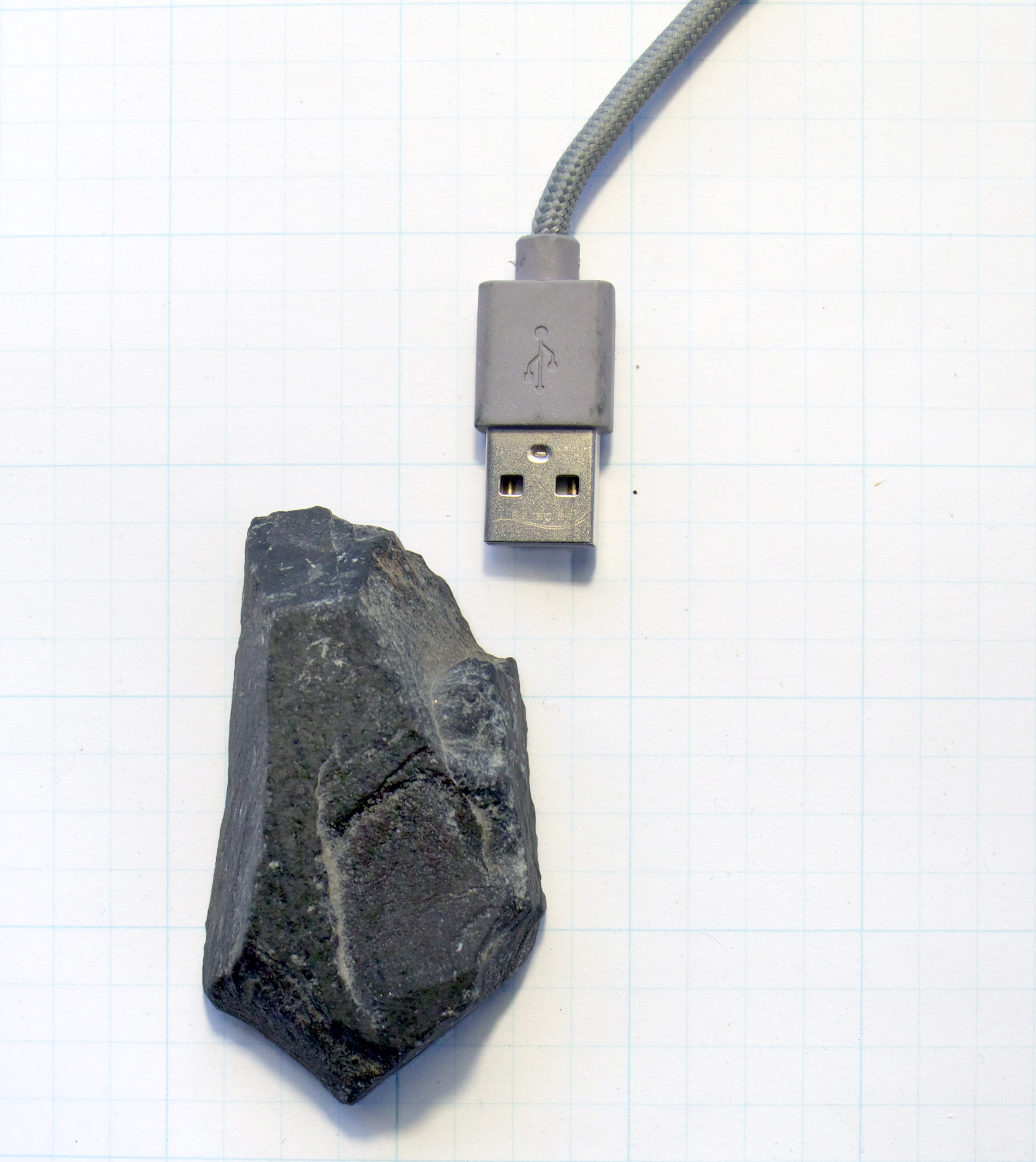

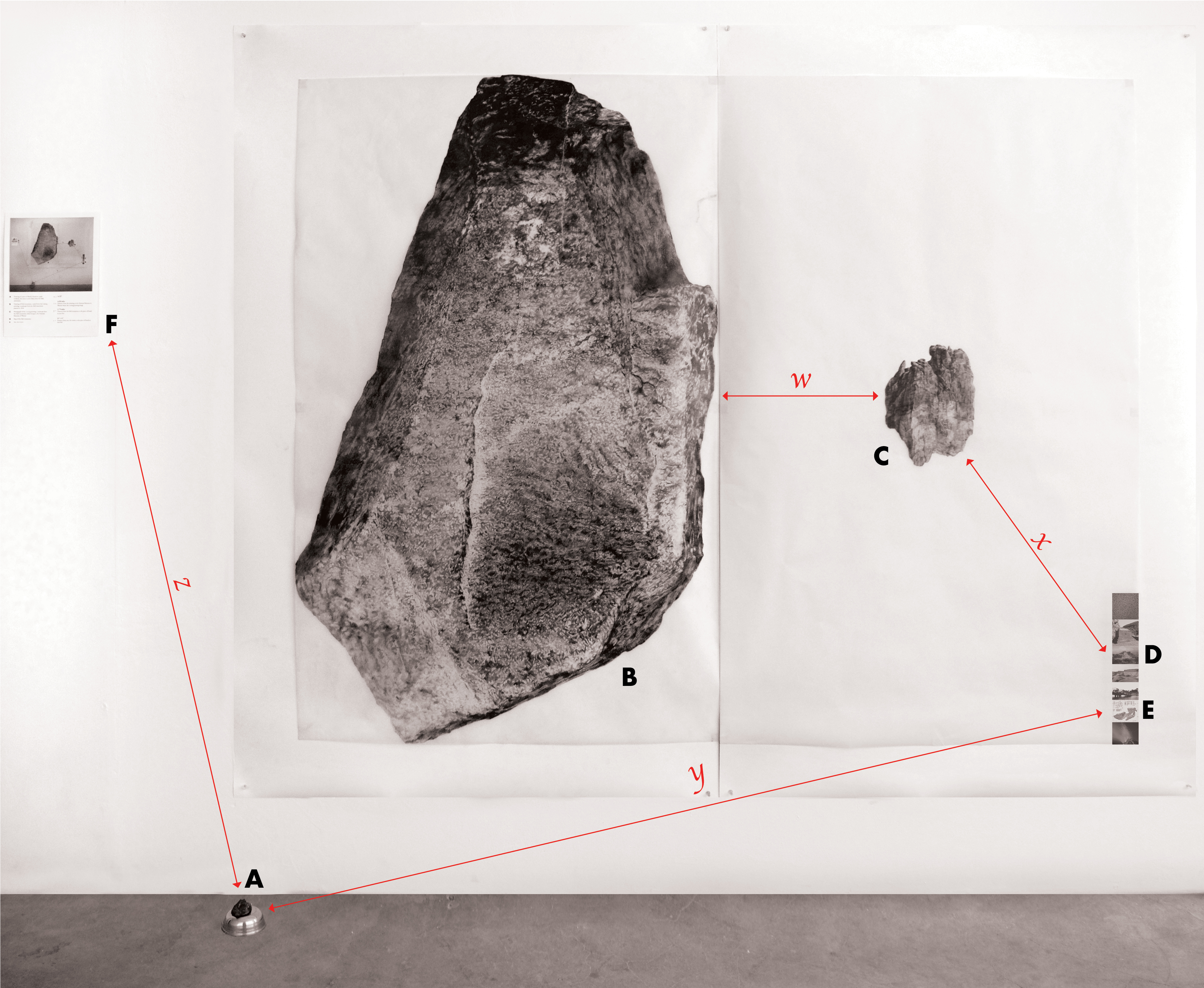
A. Piece of Basalt, found on a path in Berlin, most likely from the Eifel mountain region. Original stone is 2-1/2” long by 1-11/32” wide.
B. Drawing of the piece of Basalt
C. Drawing of Eifel mountains, copied from the Lessing painting, Landscape from the Eifel mountains, painted in 1834
D. Photograph of the Lessing painting, Landscape from the Eifel mountains, which hangs in the National Museum of Warsaw
E. Map of the Eifel mountains
F. You, the viewer
w. Dimension variable: depending on screen/projection
x. 7192.149 Kilometers: Distance from the data center in Ashburn, Virginia that hosts this website to the National Museum in Warsaw where the Lessing painting hangs
y. 502.715 Kilometers: Distance from the Eifel mountains to the location in Berlin where I found the basalt
z. 6726.303 Kilometers: Distance from the data center in Ashburn, Virginia that hosts this website to the IP address of your computer
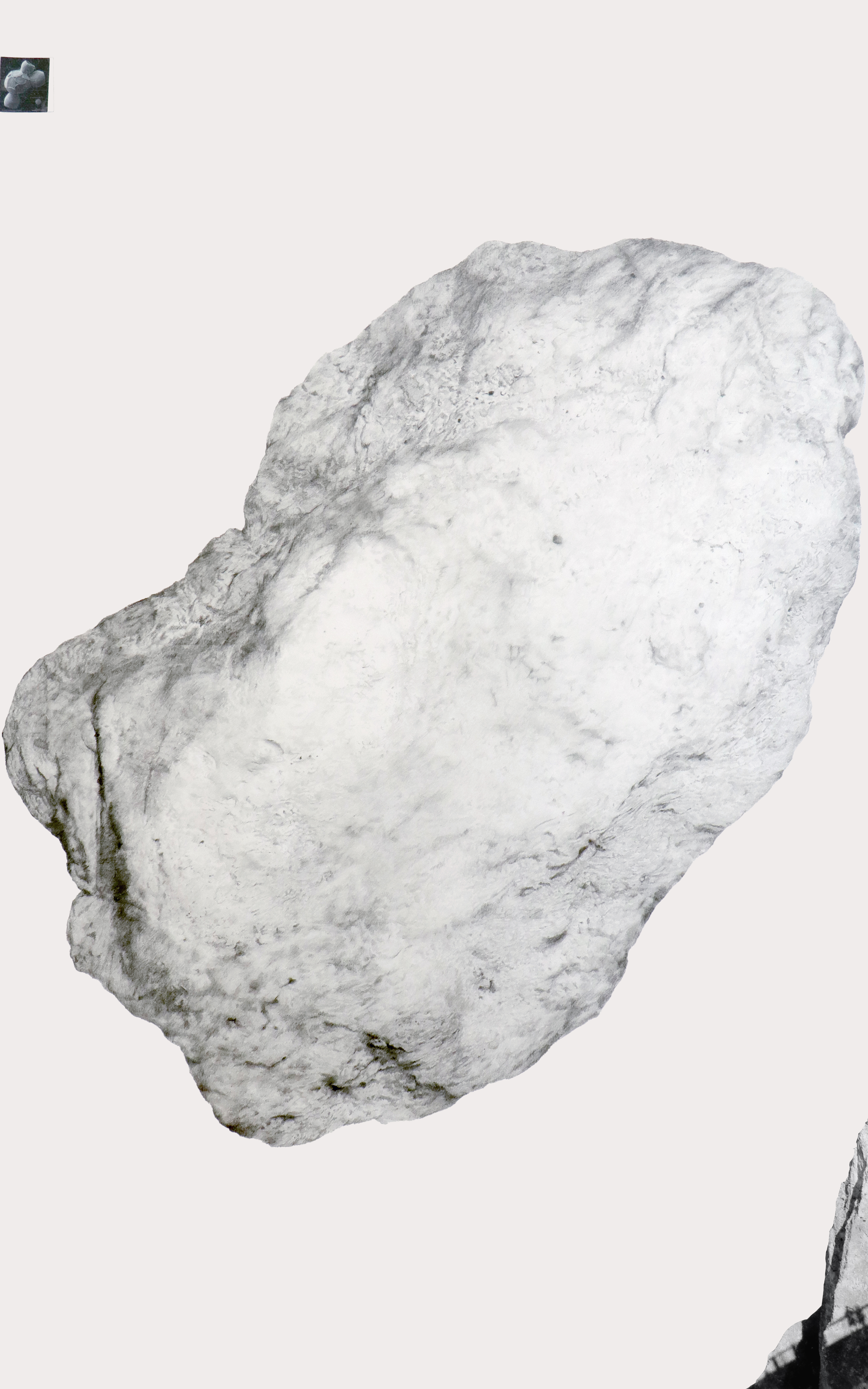
A particle in my pocket is speaking with a satellite in our stratosphere, letting me, a human, know that I am here upon this earth.
A cliff, formed 70 million years ago, is captured by a camera and uploaded to a data center halfway around the world in a fraction of a second. The image will live there in perpetuity, while the cliffs will continue to weather and change.
The accumulation of a molecule released in service of our runs to the grocery store, blasts of AC, and new city blocks changes the way heat leaves our earth, causing the extinction of a mosaic tailed rat as its island disappeared under the rising waters.
What does it mean to be a part of earth at this moment in time?
This project, Theory of the Earth, examines this question through pebbles. The pebbles, found on the ground, contain stories and timeframes that dwarf humanity, and yet they are also just pebbles that we walk on.
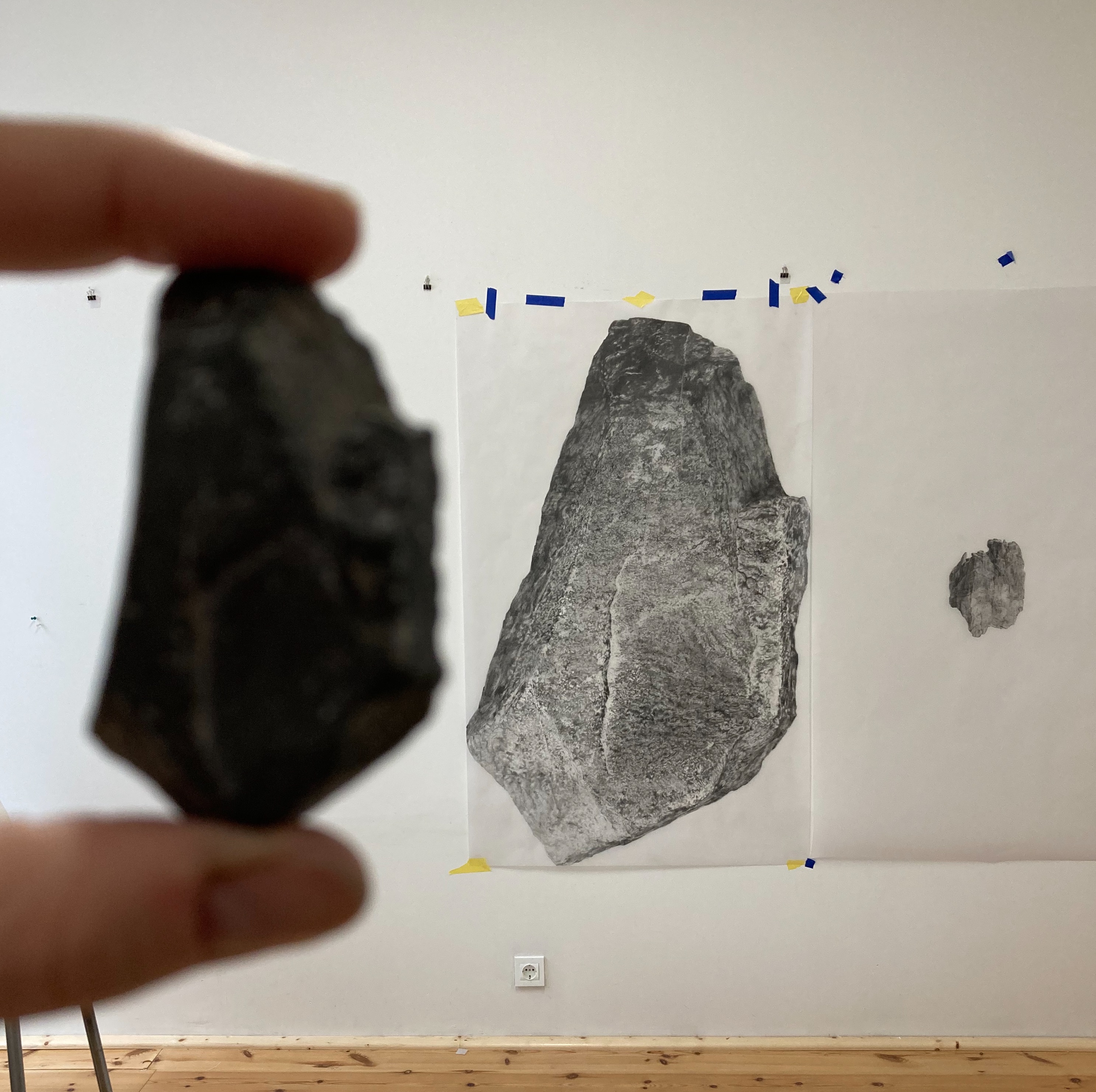
2024.
Between two mirrors
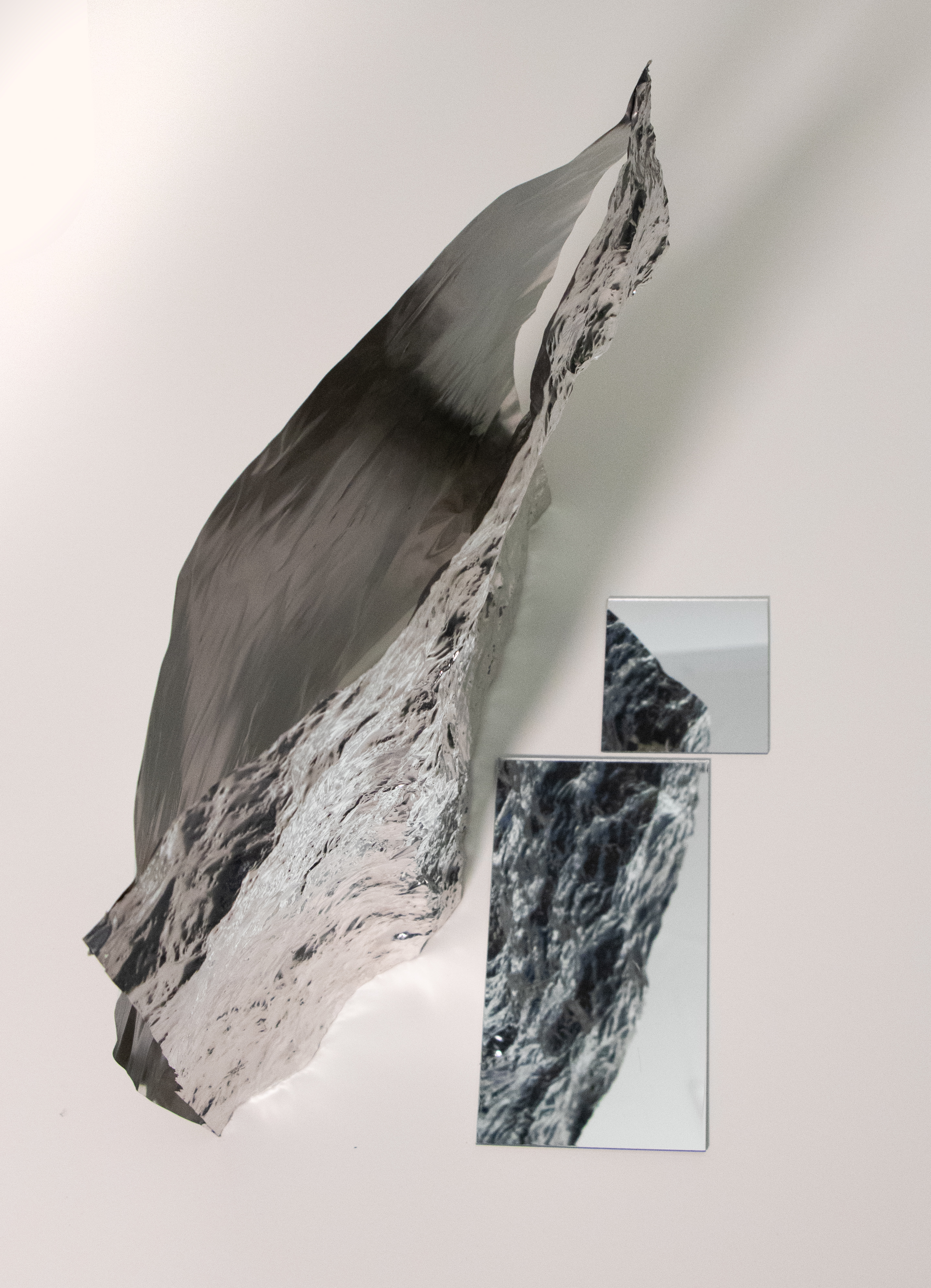
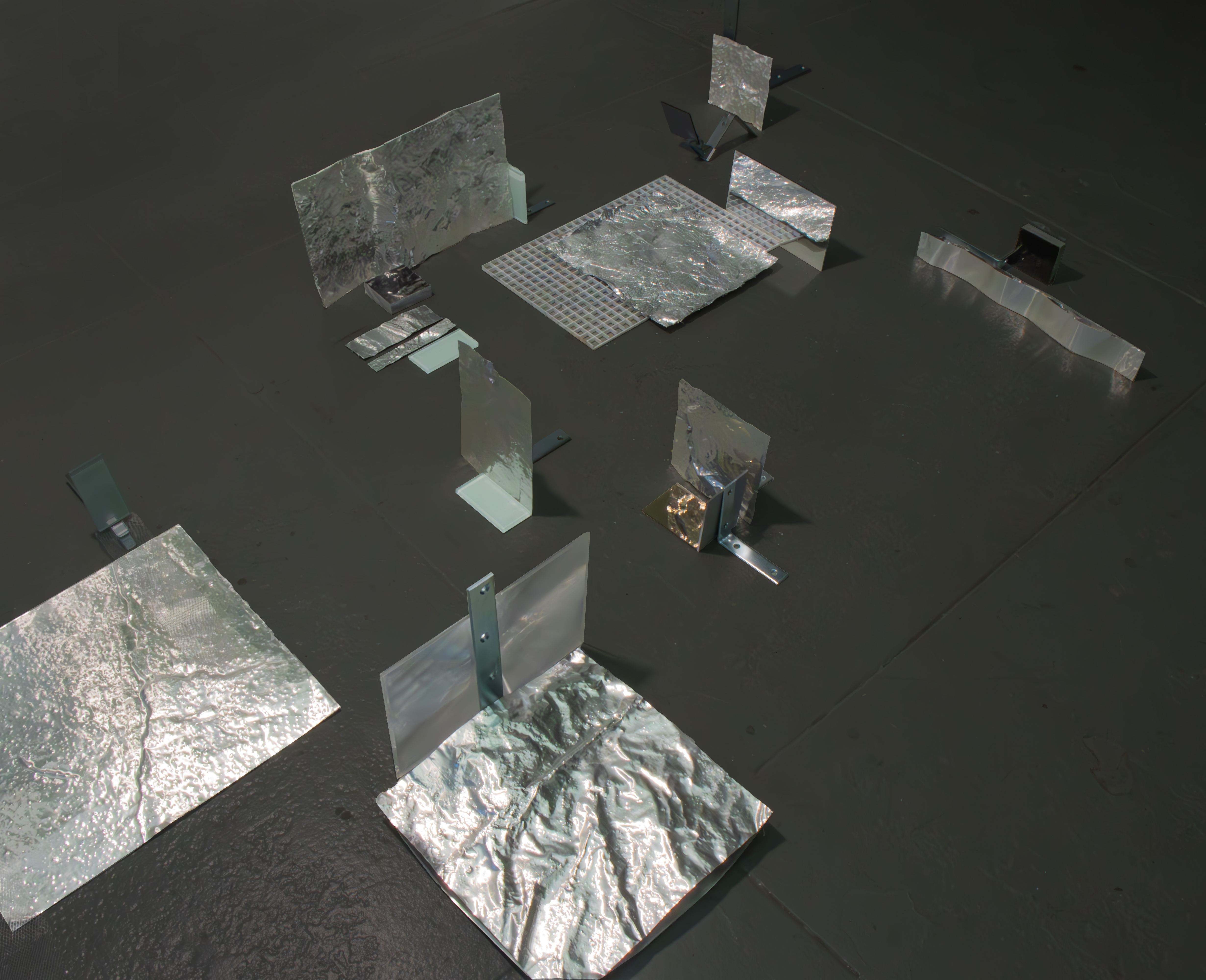
A crack in the sidewalk, a new record high temperature, a
memory of this same corner in winter, a glance at the map: as the mind flitters
between these places, scales, and thoughts, what is the experience of being in
landscape? This series, Between Two Mirrors, is centered on this question.
The installations begin with impressions of the ground; removed from their context they shed their scale and flip, multiply, obscure and deform in the mirrors, glass, and stone. The installation renders the landscape as a swirl of particulate matter: a metamorphosis of bits of images, terrain, and experiences that accumulate, however briefly, into a groundless place.
![]()
![]()
The installations begin with impressions of the ground; removed from their context they shed their scale and flip, multiply, obscure and deform in the mirrors, glass, and stone. The installation renders the landscape as a swirl of particulate matter: a metamorphosis of bits of images, terrain, and experiences that accumulate, however briefly, into a groundless place.
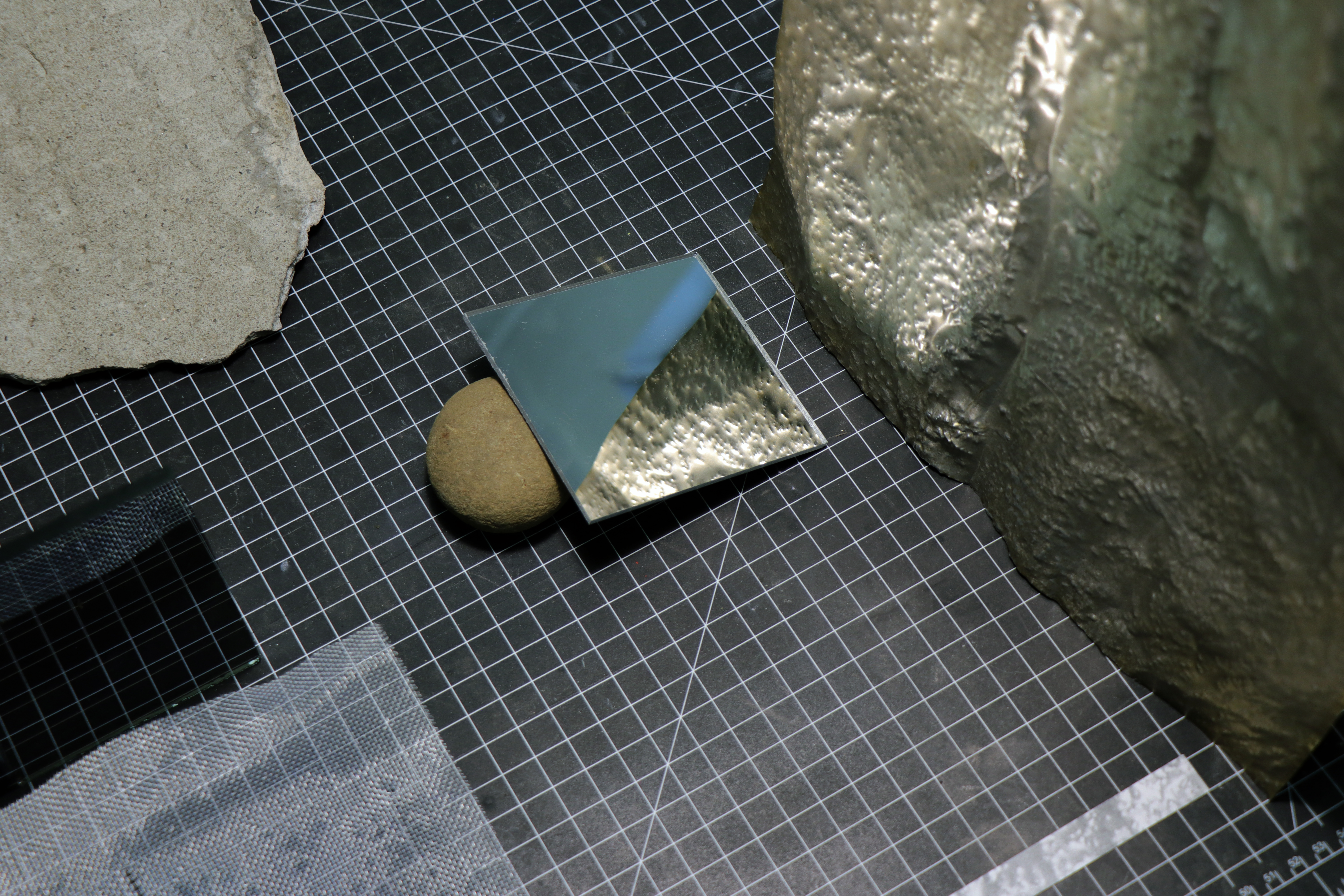
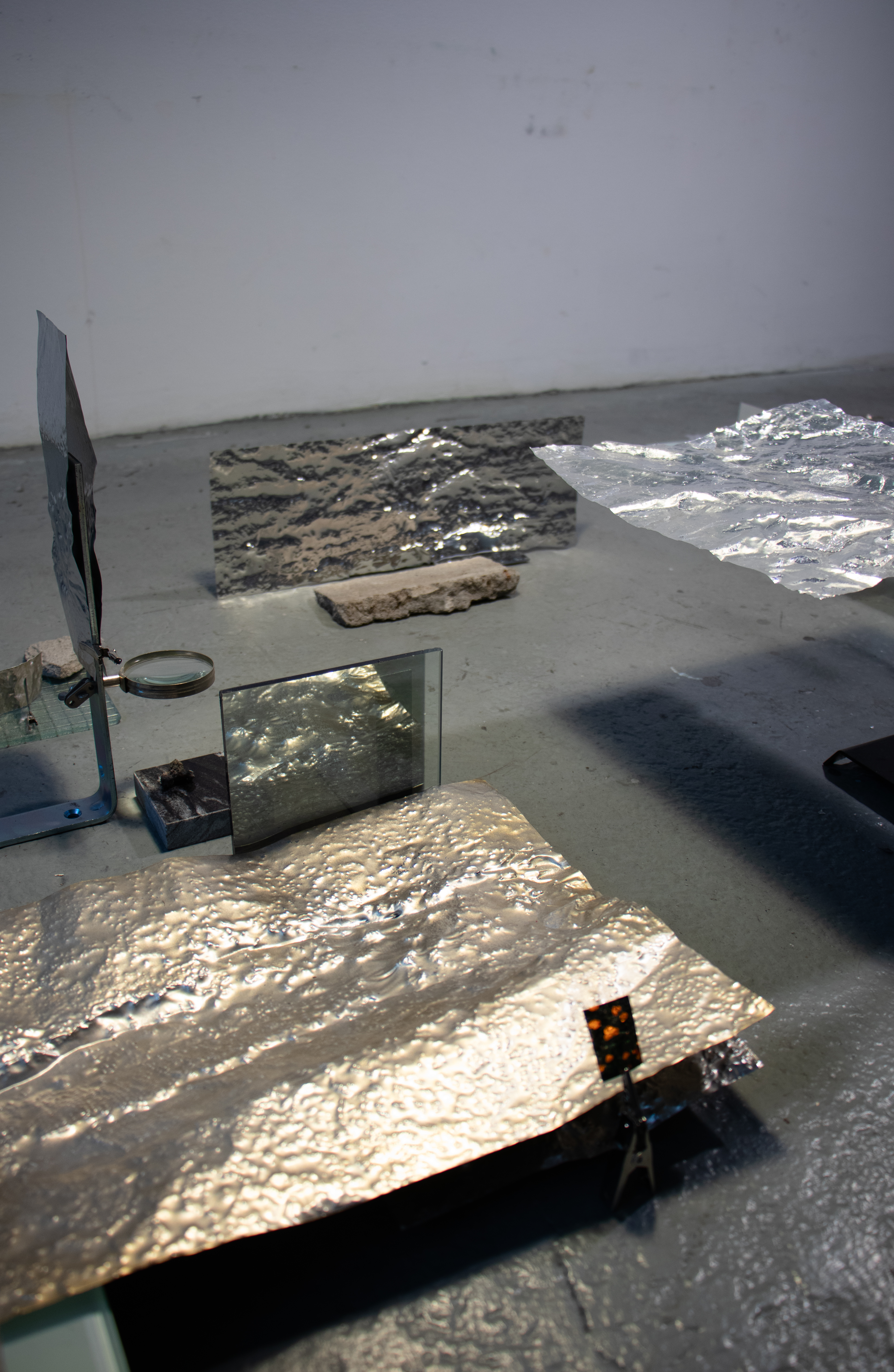
2024.
Phantom Limb

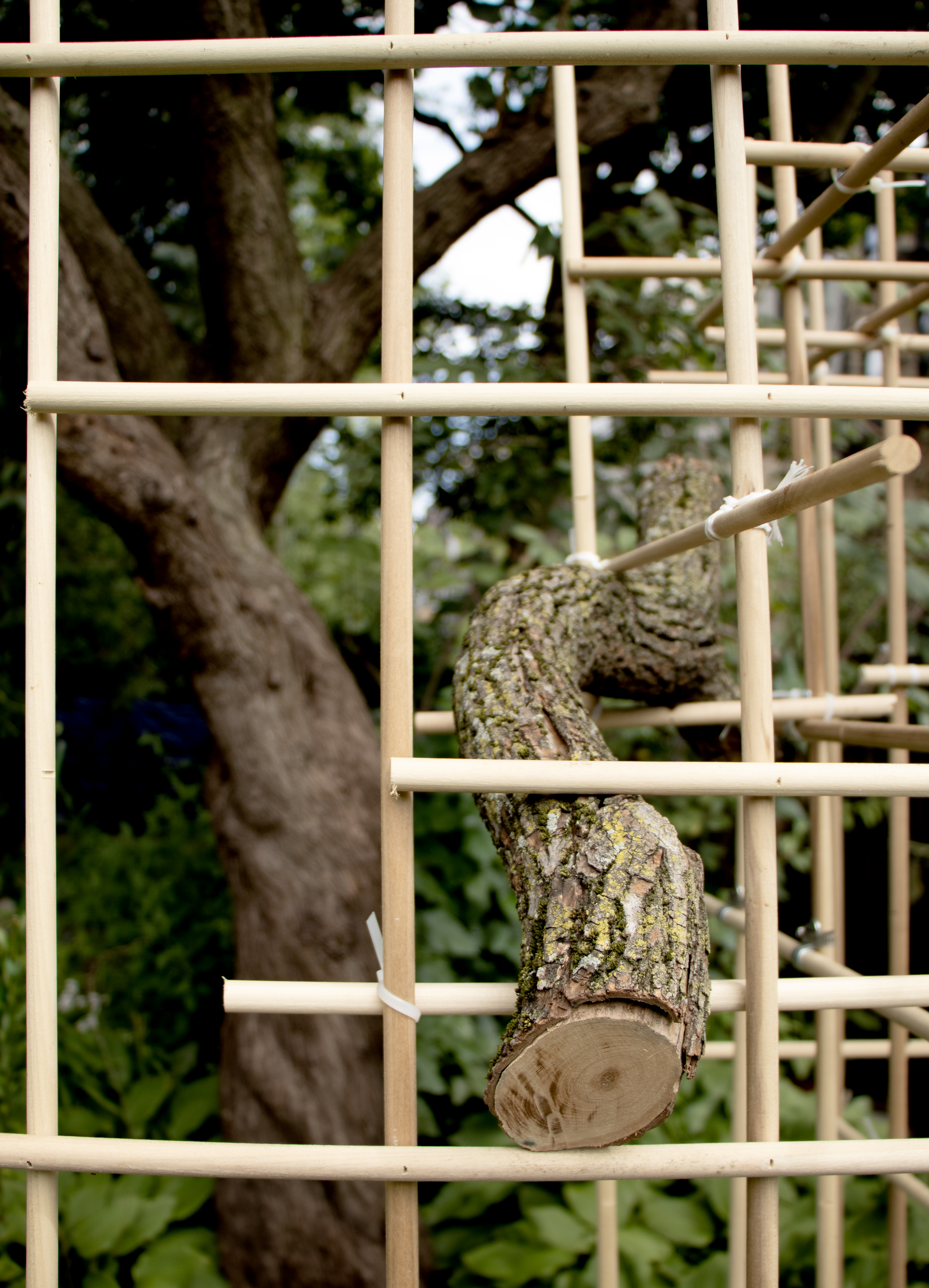
The scientist Lauren Oakes writes that a forest is ‘a stream of matter and energy’, a fitting description for a city as well. ‘Phantom Limb’ presses pause on this stream for a moment, arresting the flow of growth and decay long enough for us to bear witness. Rising from the ground as a grid of wooden dowels, the sculpture creates a scaffolding on which branches float. The branches, in turn, provide the cross supports necessary to strengthen the orthogonal structure of the grid. ‘Phantom Limb’ flickers between movement and suspension, hewn and raw wood, the grid and organic forms; creating a tension that energizes the sculpture.

